The World Stamp Show-NY 2016 Court of Honor and Invited exhibits will feature a variety of priceless world philatelic rarities. This is a once-in-a-lifetime opportunity to see them all in one place. We are especially pleased that prominent philatelists from around the globe have agreed to display them, including members of the distinguished Club de Monte Carlo. Here is just a sampling, in the order of their issuance.
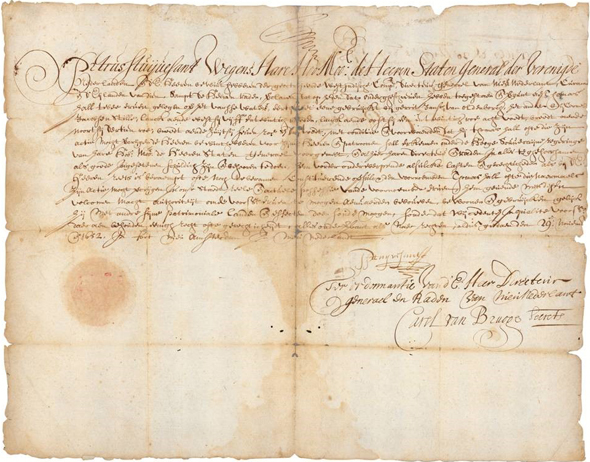
New Amsterdam History
One of three documents in public hands bearing the signature of the last Dutch director-general of New Amsterdam, Peter Stuyvesant, who served from 1646-1664. This edict was signed by him in 1652. The British forced the Dutch out and renamed the colony “New York.” Read more.
From the collection of Patrick Maselis, Belgium.
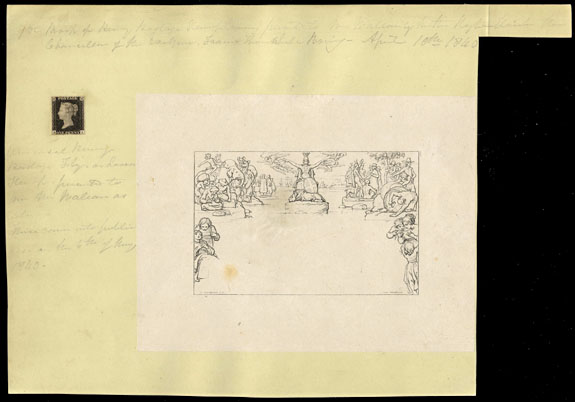
Penny Black Proof and Mulready Sheet
Robert Wallace, a postal reform advocate, prepared an archive of items dealing with Great Britain’s penny postage program of 1840. A single (position AI) from the first Penny Black proof sheet from plate 1a produced on April 8 was presented to Wallace and attached to a proof of the Mulready stereotype, state 1, before the top and side panels as well as the denomination descriptions were added. It is inscribed, “1st Proof of Penny Postage Stamp Cover, presented to Mr. Wallace by the Right Honable. The Chancellor of the Exchequer, Francis Thornhill Baring, April 10th, 1840. Read more.
From the collection of Alan Holyoake, Great Britain.
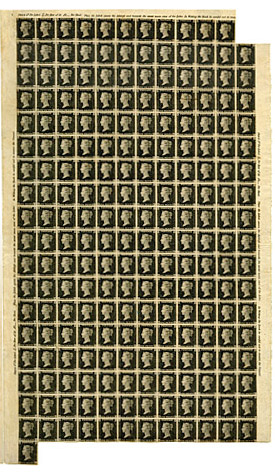
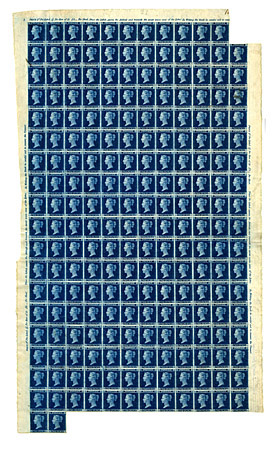
The World's First Postage Stamps (click each above to enlarge)
Here is the very first printed sheet of the Penny Black, plate 1 before hardening, dated April 15, 1840; and the earliest known example of the two penny blue, a sheet from plate 3 from January 1841. Both sheets, originally of 240 examples, are nearly intact with just a handful of each removed. The 1d sheet has never been shown outside of the United Kingdom, while the 2d sheet has never been on public display anywhere. A presentation about them, “Postal Reform & the Penny Black,” will be given at 11 AM on Tuesday, May 31 by Douglas N. Muir, Senior Curator, Philately, The Postal Museum.
From the Collection of The Postal Museum of Great Britain and their National Archives.
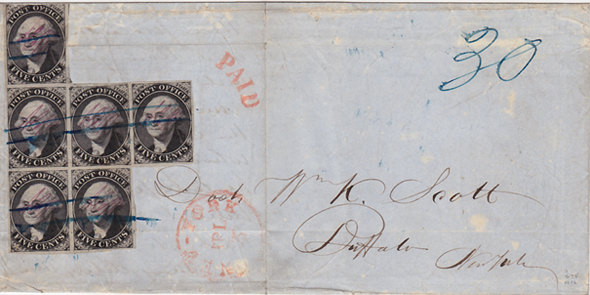
New York Postmaster’s Provisionals
Folded letter postmarked April 3 (1846) bearing the second-largest multiple of the New York City Postmaster’s Provisional issue of 1845 sent from New York City to Buffalo paying triple the over 300 mile rate. The restored block of 6 stamps are from plate positions 1, 6-8 and 11-12. Read more.
From the Collection of Mark Schwartz, USA
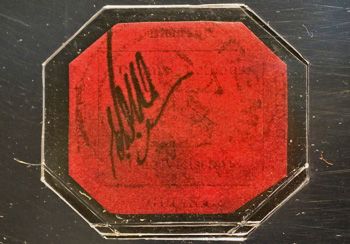
1856 British Guiana One Cent Magenta
The world’s most valuable stamp will be here, the unique 1856 British Guiana one cent magenta, which was sold at auction last June 17 for $9.48 million dollars to fashion shoe designer Stuart Weitzman. Its celebrated story of being found in 1873 by a 12 year old schoolboy is legendary. The stamp is on a three-year loan to the Smithsonian’s National Postal Museum and will be in a special display case at their booth through Friday of the show.
From the Collection of Stuart Weitzman.
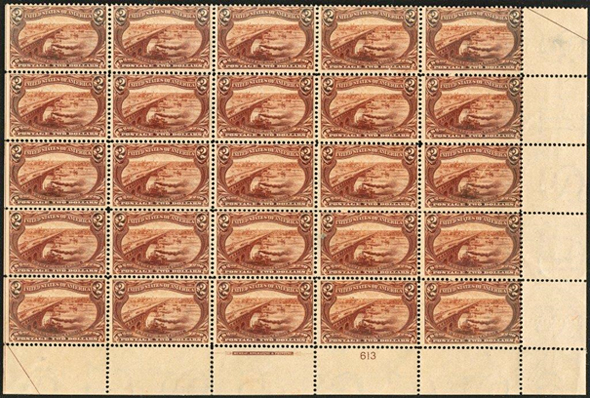
$2 Trans-Mississippi Pane
A complete post office pane of 25 of the $2 Trans-Mississippi issue of 1898 depicting the Saint Louis Bridge (Eads Bridge). This is the largest known multiple of the highest denomination of the 9 stamp set. Only 25,000 of these stamps were ever printed, with an unknown quantity returned to the post office as unsold and eventually destroyed in March, 1900. Read more.
From the Collection of Donald Sundman, USA
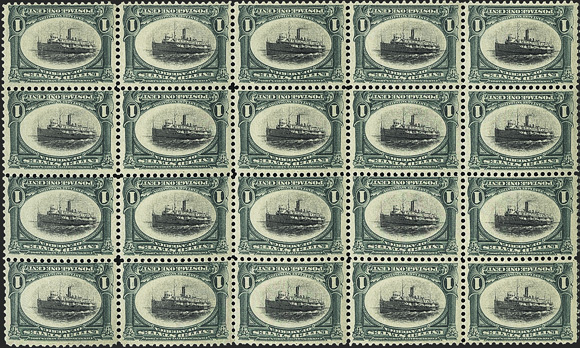
1 cent Pan Am Invert Block of 25
Considered as the most valuable U.S. commemorative multiple in existence, this block from the 1901 Pan American issue features the Great Lakes steamer "City of Alpena" in a far from normal position. Five sheets were eventually discovered with inverted frames, of which this block of 25, 13 blocks of 4, 1 block of 6 and 1 block of 20 are recorded. Read more.
From the Collection of Bill Gross, USA